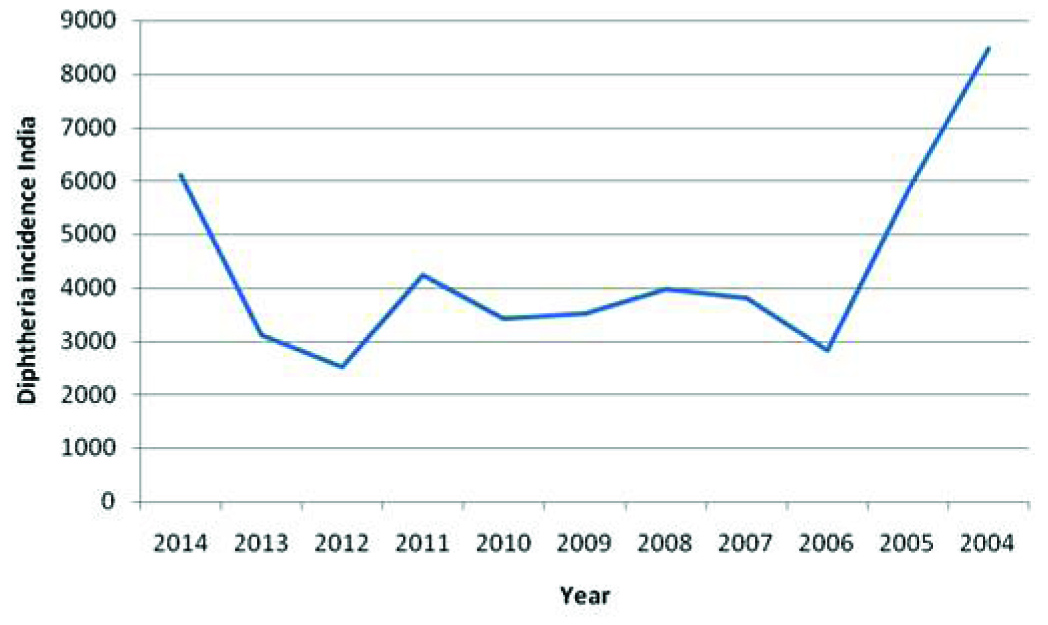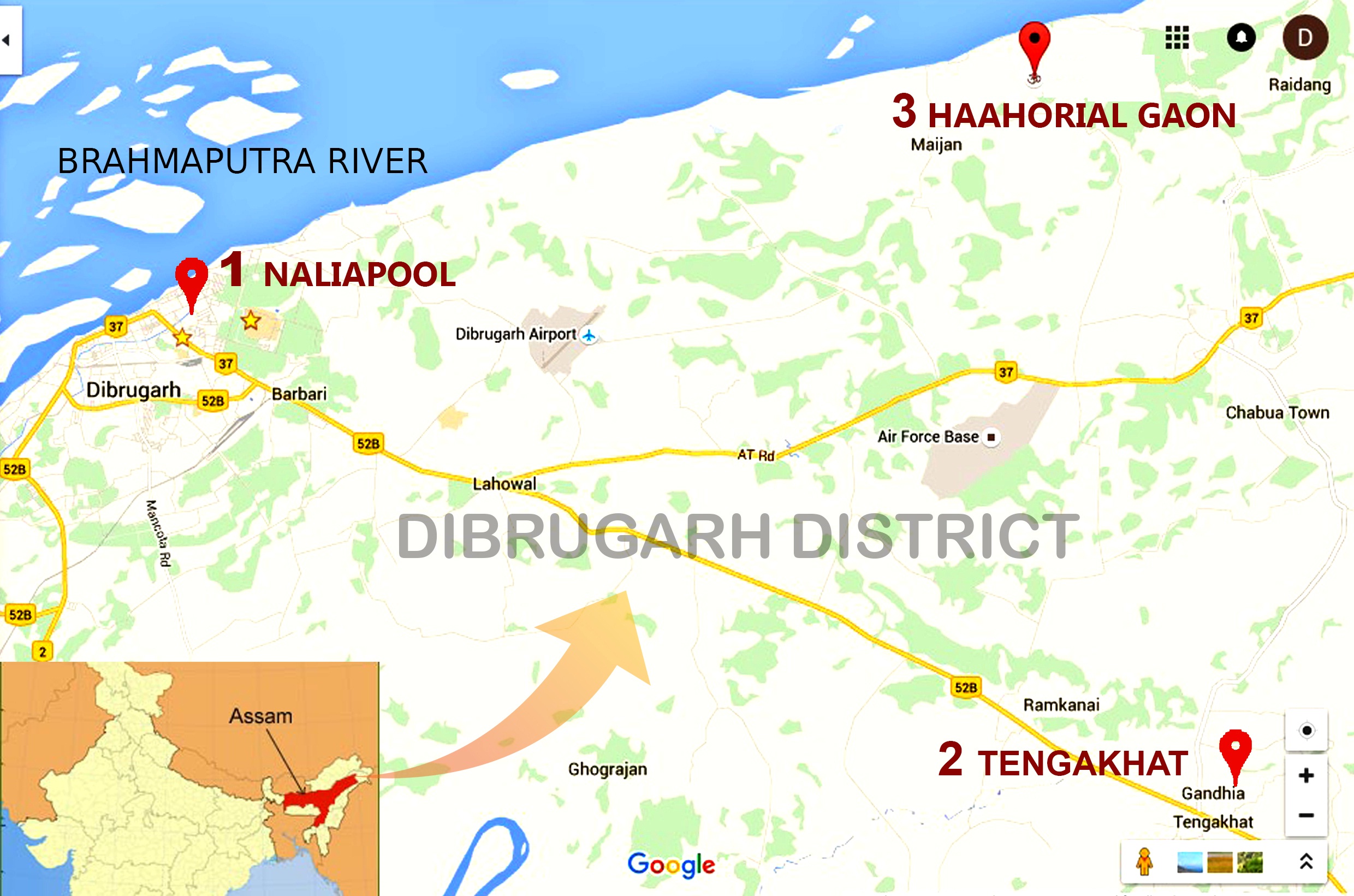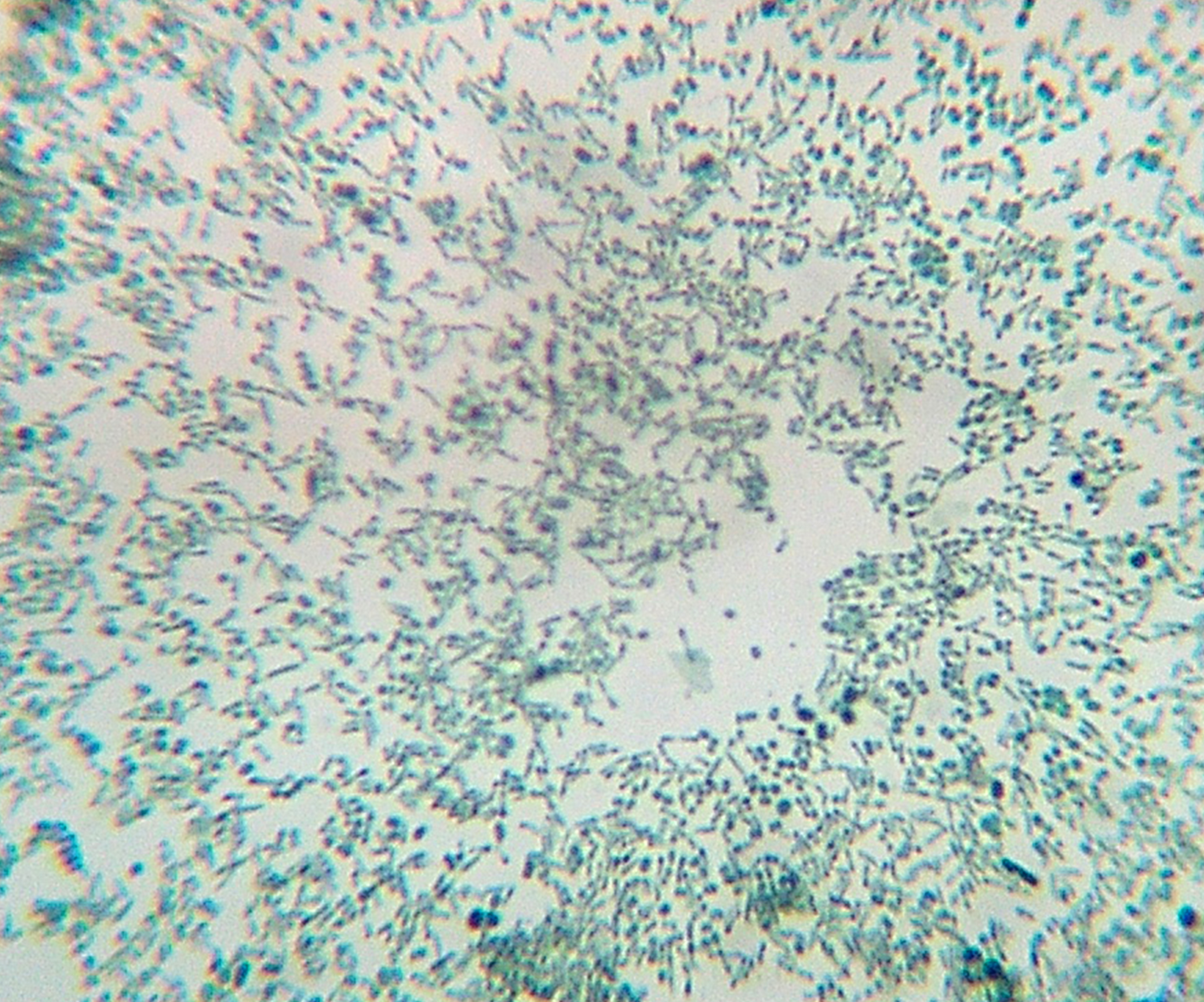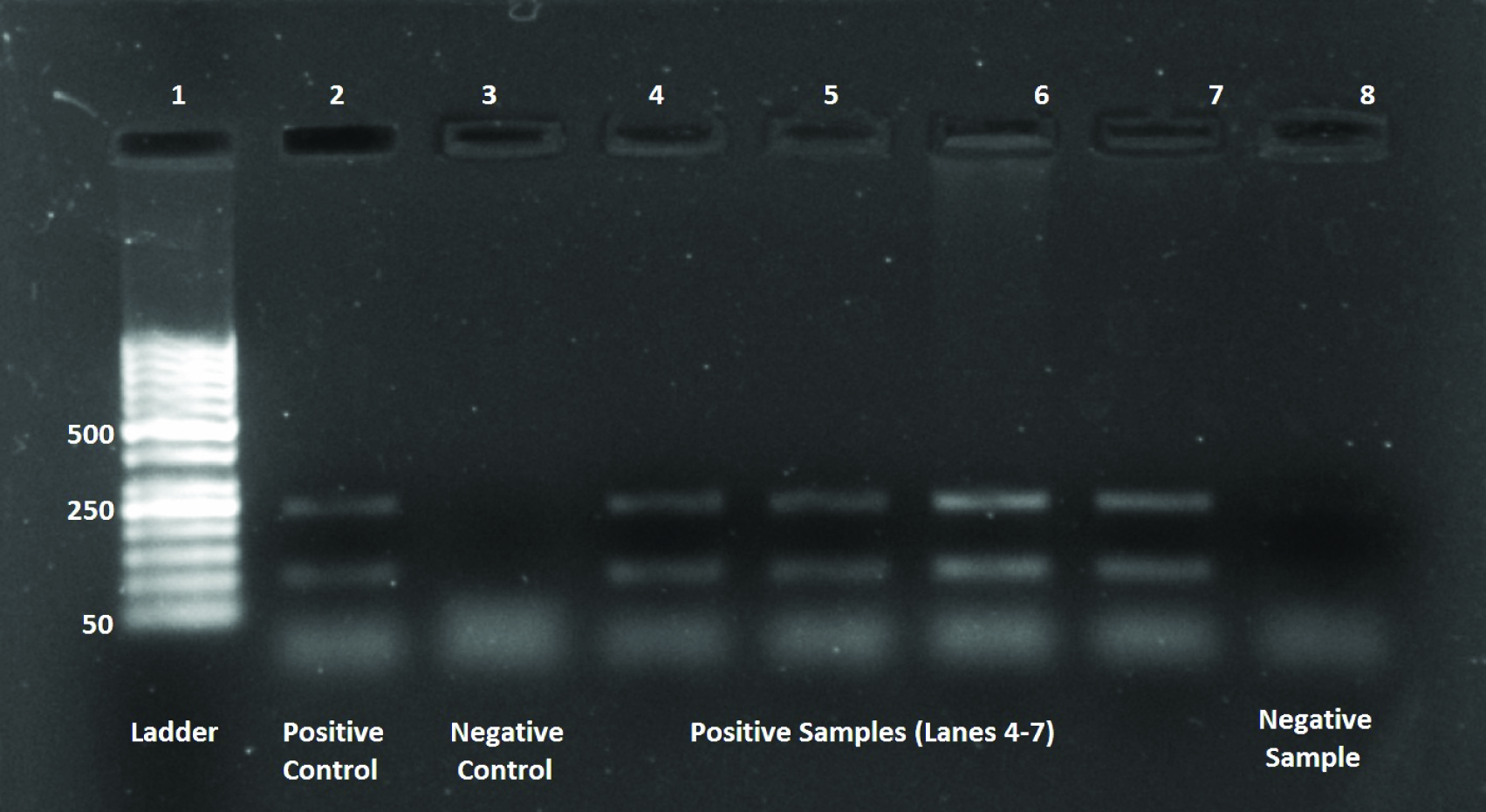Recent Outbreaks of Diphtheria in Dibrugarh District, Assam, India
Partha Pratim Das1, Saurav Jyoti Patgiri2, Lahari Saikia3, Debosmita Paul4
1 Demonstrator, Department of Microbiology, Assam Medical College & Hospital, Assam, India.
2 Research Scientist II, Department of Multidisciplinary Research Unit (ICMR), Assam Medical College & Hospital, Assam, India.
3 Professor, Department of Microbiology, Assam Medical College & Hospital, Assam, India.
4 Post Graduate Trainee, Department of Microbiology, Assam Medical College & Hospital, Assam, India.
NAME, ADDRESS, E-MAIL ID OF THE CORRESPONDING AUTHOR: Dr. Partha Pratim Das, Demonstrator, Department of Microbiology, Assam Medicaal College & Hospital, Dibrugarh-786002, Assam, India.
E-mail: drppd83@gmail.com
Diphtheria is still a significant child health problem in countries with low immunization coverage. Reports of diphtheria in adult population are also increasing. Here we describe three recent outbreaks of diphtheria in Dibrugarh district, Assam in two consecutive years. The study was undertaken in Assam Medical College & Hospital, Dibrugarh after the diagnosis of two Diphtheria cases in the month of September and October 2015 and another in January 2016. Outbreak investigation was done after defining operational definition and throat swabs were collected from thirty three (33) individuals including three (3) index cases and thirty (30) close contacts. Diagnosis was done by clinical findings, direct microscopy, bacteriological culture and in-house designed multiplex Polymerase Chain Reaction (PCR) of the isolates for the expression of Corynebacterium diphtheriae specific rpoB gene and tox gene. Out of the 10 confirmed cases, 2 and 7 were in the first two outbreaks while only one in the third outbreak respectively. All the cases were of age > 10 years, unimmunized or partially immunized.
The overall mortality was 20%. PCR results revealed all the culture positive isolates to be tox gene positive. Diphtheria is a resurgent problem in our region with a significant age shift towards adult.
Corynebacterium diphtheriae, Diphtheria antitoxin, Immunization, Tox gene
Introduction
Diphtheria is an acute, toxin-mediated, infectious disease caused by the bacterium Corynebacterium diphtheriae. Despite the Universal Immunization Programme of India, which offer 3 doses of the Diphtheria, Pertussis and Tetanus (DPT) vaccine starting at 6 weeks of age followed by 2 booster doses at 18 months and between 54 and 72 months of age, there have been a number of reports of either re-emergence or persistence of diphtheria from several Indian states including Assam in the last 5-10 years. The data on vaccine-preventable diseases provided by the Government of India to the World Health Organization indicates persistence of diphtheria without much decline over the last 10 years [1] [Table/Fig-1]. India alone accounted for 83.3% of the global burden of Diphtheria in 2014 [1].
Diphtheria incidence in India (2004-2014).

National Health Profiles data of Government of India (CBHI, 2011) showed that the number of reported cases of diphtheria in Assam increased from 894 (no death) in 2011 to 1450 (no death) during 2013 while seventeen deaths reported out of 506 cases during the year 2014 [2]. Though frequent sporadic cases have been diagnosed in recent years, the last reported outbreak in Dibrugarh district of Assam was in 2009, where adults were primarily affected [3,4].
Here we report three outbreaks [Table/Fig-2] in two consecutive years in Dibrugarh district of Assam, India.
Diphtheria outbreak locations, Dibrugarh district, Assam, India (Source: Google map).

Case Series
The present study involves a total number of thirty three (33) individuals which include one index case of each outbreak and 30 close contacts. The study was undertaken in Assam Medical College & Hospital, Dibrugarh, Assam, in the months of September and October, 2015 and January, 2016. The diagnosis of diphtheria infections was based on clinical manifestations with bacteriological confirmation by standard microbiological methods. Outbreak investigation was done with the use of the following operational definitions:
Index case: The first confirmed case or instance of a patient coming to the attention of health authorities.
Suspected case: Patient of any age with upper respiratory tract disease (pharynx, larynx, tonsils, nose), characterized by throat pain, mild fever, with adhering pharyngeal membrane and/or difficulty in swallowing or breathing.
Confirmed case: A symptomatic or asymptomatic case confirmed by isolation of toxigenic Corynebacterium diphtheriae, or any suspected case that has an epidemiological link with a laboratory-confirmed case.
Contact: Any person living with a confirmed case, or frequenting his/her household or having some link (occupational, academic, or social) with a confirmed case.
All the culture positive isolates of C. diphtheriae using Sheep Blood Agar (SBA) and Potassium Tellutite Agar (PTA) were subjected to in-house designed multiplex PCR for the detection of C.diphtheriae specific rpoB gene (in house designed primer pairs: forward 5’-AGCTGGGCGACTCGGTTC-3’ and reverse 5’-GCTCAGAAA GAGACAGCGACATATT-3’) and tox gene (primer pairs: forward 5’-CGTACCACGGGACTAAACCT-3’ and reverse 5’-AGTGCGA GAACCTTCGTCAG-3’) yielding products of 105 base pair (bp) and 226 bp respectively.
Case 1
It is from outbreak 1. The index case, 13-year-old, unimmunized girl from Naliapool town of Dibrugarh district with fever, sore throat and membrane over the tonsils presented to ENT outdoor on 21st September, 2015. Direct microscopy for Klebs-Loeffler bacillus (KLB) by Albert staining [Table/Fig-3] and culture of throat swab on SBA and PTA confirmed presence of C. diphtheriae. Treatment started with erythromycin in isolation ward, diphtheria antitoxin was not administered due to unavailability. The patient showed initial improvement and the membrane had cleared off but later she lost her life on day 15 due to myocarditis.
Albert staining of Klebs Loeffler bacillus.

During outbreak investigation, the contacts were found to be unimmunized and residing in an overcrowded housing complex with problem of poor ventilation. Only one out of four (1/4) close contacts was found culture positive for C.diphtheriae [Table/Fig-4].
Outbreak line list of diphtheria cases.
| Outbreak No. & Location | Age (years) | Sex | Immunization status | Contact history | Symptoms and sign | Culture forC. diphtheriae | PCR for rpoB and tox gene for C. diphtheriae | Complication | Outcome |
|---|
| 1Naliapool,Dibrugarh | 13 | Female | unimmunized | Index case 1 | Fever and sore throat for 3 days (membrane seen) | Positive | Positive | Myocarditis | Death(day 15) |
| 30 | Female | unknown | Household contact of outbreak 1 (Mother) | Asymptomatic | Positive | Positive | - | Recovered |
| 2Bagrodia Tea EstateTengakhat, Dibrugarh | 17 | Female | unimmunized | Index case 2 | Sore throat and dysphagia for 5 days and fever for 3 days (membrane seen) | Positive | Positive | Myocarditis | Death(day 13) |
| 65 | Male | unknown | Household contact of outbreak 2 (Father) | Asymptomatic | Positive | Positive | - | Recovered |
| 13 | Male | unimmunized | Household contact of outbreak 2 (Brother) | Asymptomatic | Positive | Positive | - | Recovered |
| 20 | Female | unknown | Household contact of outbreak 2 (Sister) | Asymptomatic | Positive | Positive | - | Recovered |
| 15 | Female | unimmunized | Direct contact of outbreak 2 (neighbour) | Asymptomatic | Positive | Positive | - | Recovered |
| 20 | Female | unknown | Direct contact of outbreak 2 (neighbour) | Asymptomatic | Positive | Positive | - | Recovered |
| 11 | Female | Partially immunized | Household contact of outbreak 2 (neighbour) | Asymptomatic | Positive | Positive | - | Recovered |
| 3Haahorial village, Lahoal, Dibrugarh | 18 | Male | Claimed to be immunized(No document) | Index case 3 | Pain in throat for 3 days(membrane seen) | Positive | Positive | - | Recovered |
Case 2
This case is from outbreak 2. The index case, 17-year-old unimmunized girl from Bagrodia Tea Estate, Tengakhat of Dibrugarh district was admitted in our hospital on 5th October, 2015 with complains of sore throat, fever and dysphagia with a thick whitish membrane covering both the anterior pillars and soft palate extending to the base of the tongue. Direct microscopy and culture confirmed presence of C. diphtheriae. Treatment was started with erythromycin, but diphtheria antitoxin was not available. She too lost her life on day 13 due to diphtheric myocarditis. All the close contacts were asymptomatic and unimmunized/ immunization status unknown. Six out of eleven (6/11) close contacts of this outbreak were found culture positive for C. diphtheriae [Table/Fig-4].
Case 3
This case is from outbreak 3. The index case, an 18-year-old fully immunized boy from Haahorial village, Lahoal of Dibrugarh district reported to our hospital with pain in throat and a grey membrane over uvula without fever on 21st January, 2016. Direct microscopy and culture revealed presence of C. diphtheriae. Prompt isolation and treatment with diphtheria antitoxin and erythromycin was done. The membrane cleared off gradually and repeat culture was negative after 10 days. All the close contacts (15 numbers) were fully immunized, found asymptomatic and culture negative.
Discussion
Diphtheria is an infectious disease caused by the exotoxin produced by C.diphtheriae which may cause obstructive pseudo-membranes in the upper respiratory tract or damage to myocardium and other tissues [5]. Although most infections are asymptomatic or run a relatively mild clinical course, high case fatality rates have been reported even in recent outbreaks [3,4]. The carriers are also important source of infection, the ratio being 95 carriers for 5 clinical cases [6].
In our study, C. diphtheriae was isolated from ten (10) out of thirty three (33) cases with overall mortality of 20% (2/10). Three were index cases and rest of them were laboratory confirmed asymptomatic close contacts. Multiplex PCR result showed expression of both C. diphtheriae specific rpoB gene and tox gene by all the culture isolates [Table/Fig-5]. Follow up culture of throat swab for two occasions from all cases were found negative.
Expression of C. diphtheriae rpoB gene (105 bp) and tox gene (226 bp) by Multiplex PCR in Lane 4-7 (positive samples); 50 bp ladder in Lane 1; In house positive control in Lane 2; negative control in Lane 3.

In our study, most of the cases were either unimmunized or with unknown immunization status. The unusual feature of the outbreaks was that all the cases were older than 10 years. A few previous reports from various parts of the country have revealed an increased incidence of diphtheria cases in adults [7–9]. Nandi et al., from Assam reported 59% of cases of >5 years of age group [10]. Saikia et al., also described the shift in age of diphtheria cases (100% cases were >5 years of age) during the last reported outbreak in Dibrugarh district, Assam [2]. Serological studies in many countries have revealed that due to lack of adult vaccination and natural immunity a high proportion of adults become susceptible to diphtheria [11]. The potential for outbreaks of diphtheria in the community may be enhanced when there are susceptible adults and unimmunized children in the same community [12].
The occurrence of repeated diphtheria outbreaks in Dibrugarh district involving adolescents and adults reflects poor immunization coverage in previous decades. The adult vaccination in India has not been implemented yet although WHO recommends Td combination vaccination for unvaccinated individuals of 7 years of age and older [13]. The use of multiplex PCR is becoming increasingly important in the diagnosis of infectious diseases and could be a simple and fast alternative procedure for identification of C. diphtheriae, including screening for toxigenic and non-toxigenic strains [14]. In the present study, all the C. diphtheriae isolates were found to be toxigenic strains as their expression of tox gene was noted in multiplex PCR results.
Limitation
Inability to measure the serum antibody titre against diphtheria toxin and to perform phylogenetic analysis of the C. diphtheriae strains are the limitations of our study which necessitates further research.
Conclusion
The present study demonstrated that toxigenic strains of C. diphtheriae are circulating in this geographical location which indicates the need for constant epidemiological surveillance ensuring early detection of diphtheria outbreaks and review the efficacy of immunization programme. Recent outbreaks have also highlighted the need of availability of adequate quantities of diphtheria antitoxin for quick medical management of cases.
[1]. World Health Organization [Internet].Geneva: World Health Organization; [Date unknown] Immunization, surveillance, assessment and monitoring. [cited 2015 Oct 20]. Available from: www.who.int/immunization_monitoring/globalsummary/timeseries/tsincidencediphtheria.html [Google Scholar]
[2]. Central Bureau of Health Intelligence [Internet]. New Delhi: Central Bureau of Health Intelligence. Directorate General of Health Services, Government of India [Date unknown]. National Health Profiles 2005 onwards. [cited 2016 February 12]. Available from: http://cbhidghs.nic.in/ [Google Scholar]
[3]. Saikia L, Nath R, Saikia NJ, Choudhury G, Sarkar M, A diphtheria outbreak in Assam, IndiaSoutheast Asian J Trop Med Public Health 2010 41:647-52. [Google Scholar]
[4]. Mahanta TG, Nath B, Investigation of an outbreak of diphtheria in Borborooah block of Dibrugarh district AssamIndian J Community Med 2010 35:436-38. [Google Scholar]
[5]. Dikid T, Jain SK, Sharma A, Kumar A, Narain JP, Emerging & re-emerging infections in India: an overviewIndian J Med Res 2013 138:19-31. [Google Scholar]
[6]. National Centre for Disease Control [Internet]. New Delhi: Director, National Institute of Communicable Diseases; 2008. CDAlert; January-March 2008 [cited 2016 February 12]. Available from: http://ncdc.gov.in/writereaddata/linkimages/Jan-March%20087398246488.pdf [Google Scholar]
[7]. Ray SK, Das Gupta S, Saha I, A report of diphtheria surveillance from a rural medical college hospitalJ Indian Med Assoc 1998 96:236-38. [Google Scholar]
[8]. Havaldar PV, Diphtheria in the eighties: experience in a south Indian district hospitalJ Indian Med Assoc 1992 90:155-56. [Google Scholar]
[9]. Dravid MN, Joshi SA, Resurgence of diphtheria in Malegaon and Dhule regions of north MaharashtraIndian J Med Res 2008 127:616-17. [Google Scholar]
[10]. Nandi R, De M, Browning S, Purkayastha P, Bhattacharjee AK, Diphtheria: the patch remainsJ Laryngol Otol 2003 117:807-10. [Google Scholar]
[11]. Nakajima H, Kariya H, Ohata R, Ogura H, Investigation of immunity level against diphtheria and reinforcement of immunity by booster vaccination for infection control staff in Okayama PrefectureJpn J Infect Dis 2008 :104-06. [Google Scholar]
[12]. Vitek CR, Wenger J, DiphtheriaBull WHO 1998 76(suppl 2):129-30. [Google Scholar]
[13]. National Centre for Disease Control [Internet]. New Delhi: Director, National Institute of Communicable Diseases; 2011. CDAlert; February-March 2011 [cited 2016 February 12]. Available from http://ncdc.gov.in/writereaddata/linkimages/February_Final_020862513827.pdf [Google Scholar]
[14]. Cianciotto NP, Groman NB, Characterization of bacteriophages from tox-containing, nontoxigenic isolates of Corynebacterium diphtheriaeMicrob Pathog 1997 22:343-51. [Google Scholar]